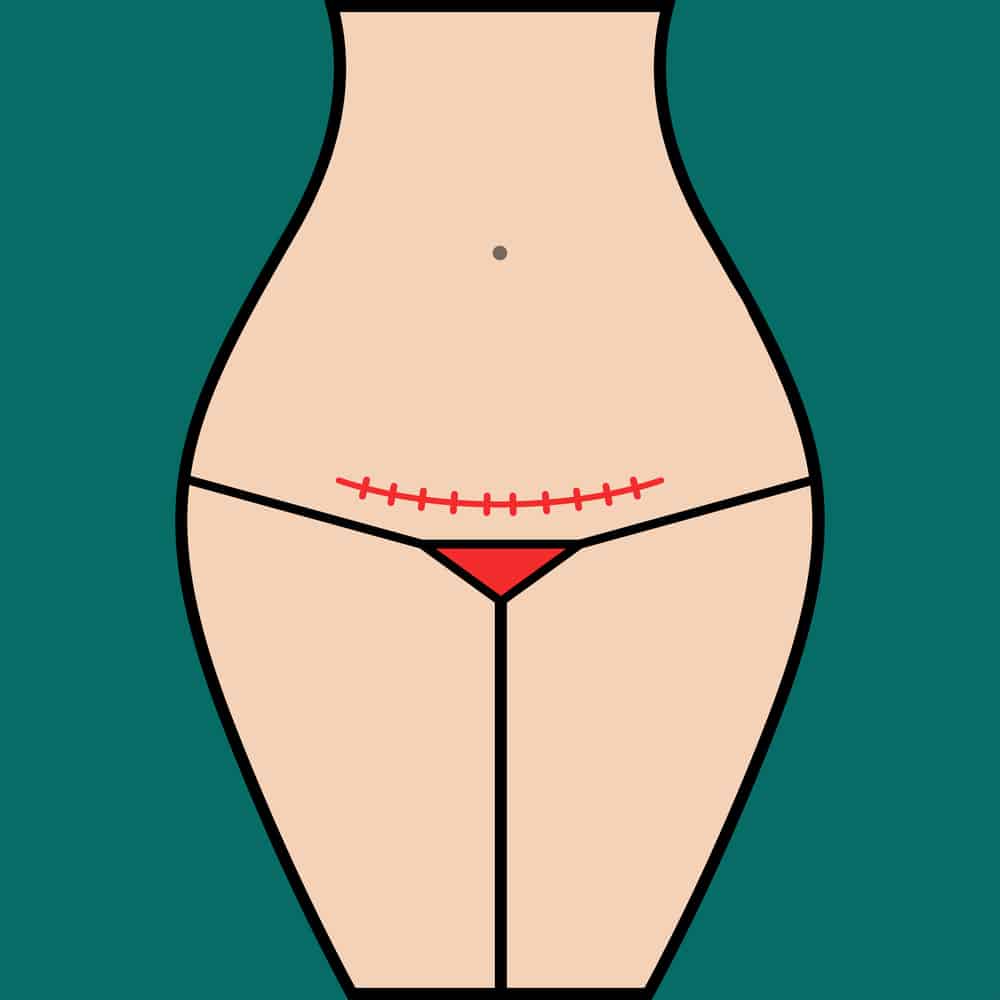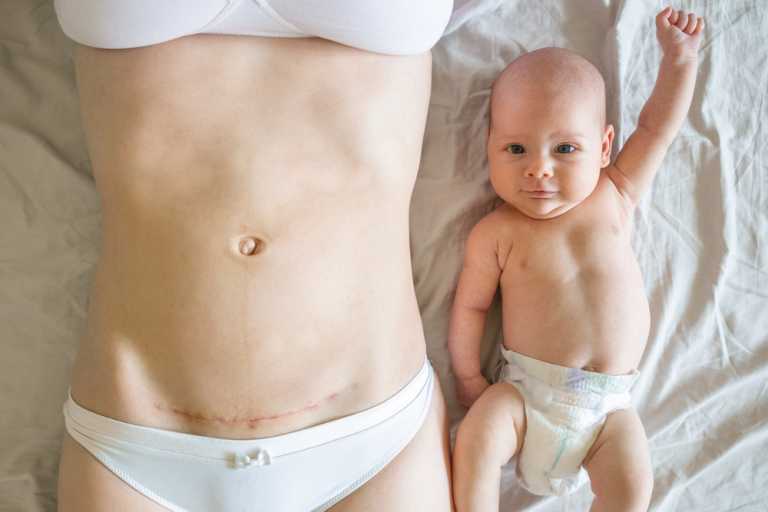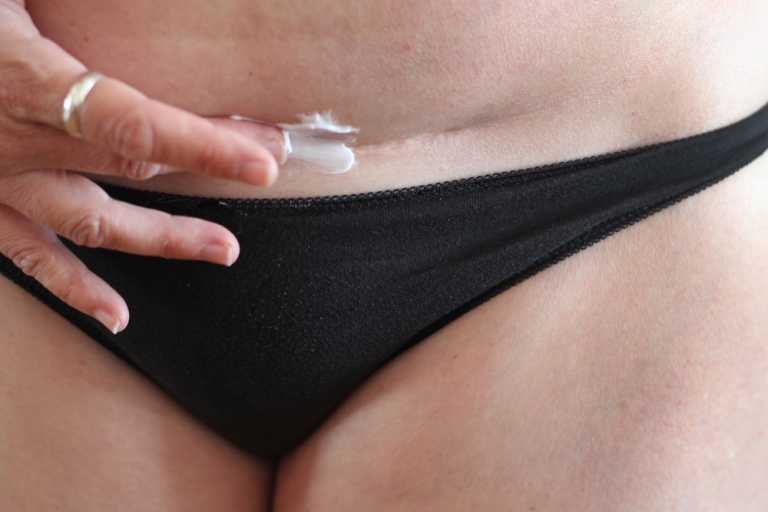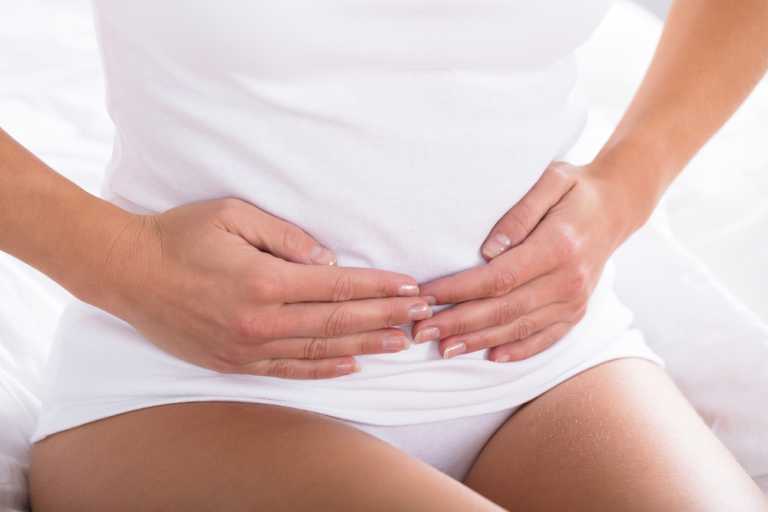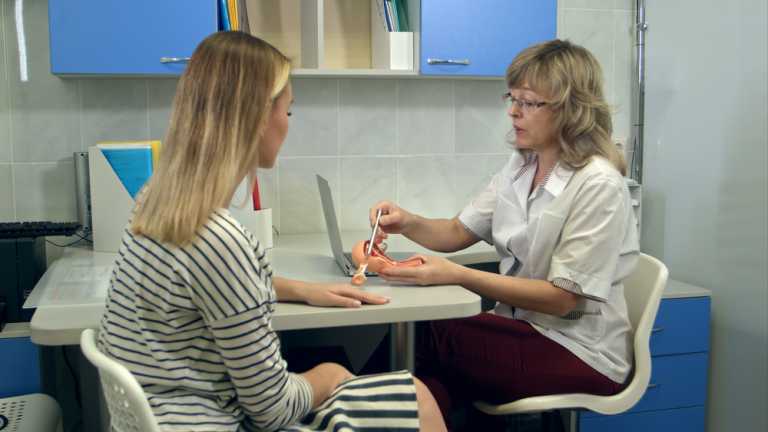The golden rule for bleeding after a c-section is that it should lighten every day. Any sudden increase is a cause for concern, and you should report it immediately.
However, this doesn’t mean you should panic. Yes, bright red bleeding that suddenly comes back could indicate infection or hemorrhage. But it could also be caused by a long walk, a growth spurt in your breastfeeding baby, or a normal part of your healing process. It might even be the return of your period!
Here’s why you might be seeing red again and, vitally, what you should do about it.
What Can Cause Post-C-Section Bleeding to Stop and Start Again?
Bleeding after birth is called lochia, which is a mixture of blood, mucus, and uterine tissue. It usually lasts for 2 to 6 weeks but can persist for 12 weeks.
Some mistakenly believe you won’t bleed after a c-section because your surgeon will “clear you out.” However, most bleeding comes from the wound left by your placenta, which will be there no matter how you give birth.
On paper, the amount and color of lochia should lighten each day. But real life is messy. Your activity levels will vary, and healing occurs at different rates. This can cause heavy days, a fresh wave of bright red blood, or even a gush as you stand up.
Here are the potential culprits:
Placenta Scab
Around two weeks after delivery, the scab where your placenta was attached to your uterine wall will come away. This can result in fresh, bright red bleeding that should subside in a few days. You may also notice small clots.
Exercise
Physical activity increases blood flow and can dislodge remaining tissue. So, it’s pretty common for bleeding to return after a long walk or exercise. This typically happens between weeks 5 and 8, when you start feeling stronger.
Breastfeeding
When you breastfeed, your body releases the hormone oxytocin. This stimulates your uterus to contract, which can trigger the release of lochia.
Menstruation
If you don’t breastfeed, your period will probably return 6 to 8 weeks postpartum. It could even come back as soon as 2 weeks after you give birth! So, it’s possible that your fresh bright red blood is simply menstruation.
Infection
Postpartum endometritis is a uterine infection that can occur anytime up to 6 weeks after birth, although it’s most common between days 2 and 10. You are more likely to develop the condition if you weren’t given prophylactic antibiotics before your first incision.
Symptoms include:
- A sudden increase in vaginal bleeding.
- Fever.
- Chills.
- Foul-smelling lochia.
- Passing blood clots.
- Pain when urinating.
- Abdominal pain or cramping.
- Feeling fluey or unwell.
If left untreated, the infection can be life-threatening and may cause infertility.
Secondary Postpartum Hemorrhage
Secondary postpartum hemorrhage is significant vaginal bleeding that occurs between 24 hours and 6 weeks after birth. This is bleeding that fills a pad in less than an hour or contains clots larger than a golf ball.
It’s a potentially fatal condition that can result in a hysterectomy. But fortunately, it’s incredibly rare and only occurs after 0.2–0.8% of births.
Hemorrhoids
Hemorrhoids are swollen veins in your rectum and around your anus. They are commonly caused by excess pressure during pregnancy and constipation after a cesarean.
When they’re irritated, they can bleed, which can sometimes be mistaken for lochia. So if you notice fresh blood on your pad, check the source.
When to Call a Doctor About Post-C-Section Bleeding
Although it’s usually nothing to worry about, fresh blood could mean a serious problem. So, you should tell your doctor any time you experience a sudden increase in vaginal bleeding after a c-section.
You should also contact your health provider urgently if you experience any of the following:
- Filling a pad every hour for 2 or more hours.
- Clots larger than a golf ball, plum, or egg.
- Foul-smelling lochia.
- Fever.
- Nausea and/or vomiting.
- Blurred vision.
- Extreme pain.
- Increased heart rate.
These symptoms indicate a medical emergency and require treatment right away.
Treatment for Excessive Bleeding Following a C-Section
If your blood loss is significant, your doctor will diagnose the cause, usually infection or hemorrhage, and treat you in one of the following ways:
Treating Endometritis
Treating uterine infections early is usually straightforward and non-invasive:
- Mild Cases
Antibiotic tablets at home.
- Moderate Cases
IV antibiotics in the hospital.
- Severe Cases
If endometritis is left untreated, you may develop abscesses, requiring surgery, or septicemia, requiring IV antibiotics.
Treating Secondary Postpartum-hemorrhages
Most secondary postpartum hemorrhages occur due to the uterus not contracting enough after delivery. So, the treatments focus on stimulating uterine contractions and slowing the bleeding. Here are the options:
- Uterine Massage
This can stimulate uterine contractions.
- Pitocin
A synthetic form of oxytocin that promotes uterine contractions.
- Bakri Balloon
A balloon is inserted into the uterus and filled with fluid. This applies pressure and stops the bleeding.
- IV Fluids and/or Blood Transfusion
Lost fluids and blood are replaced to prevent shock.
- Surgery
Sometimes, surgery is required to remove retained placental tissue, seal blood vessels, or, in extreme cases, perform a hysterectomy.
How to Manage Post-C-Section Bleeding at Home
You’ll need to manage your symptoms at home along with any medical treatment you receive. Following these tips can prevent infections and speed up your recovery.
Wear Maternity Pads
Tampons pose an infection risk, so you must wear maternity pads to catch the lochia and protect your clothes.
The best practice is to:
- Change your pad every 3 to 4 hours.
- Wash your hands before and after each change.
- Keep an eye on how long it takes to fill a pad, and call for help if you are filling one every hour.
Rest
Physical activity will increase your rate of bleeding, so it’s important to rest. This means not walking for more than 20 minutes and avoiding bending, lifting, and driving.
Avoid Strenuous Exercise or Activities That Make It Worse
Strenuous exercise that involves jumping, jogging, and lifting will increase bleeding. Instead, check out these safe exercises for c-section recovery.
Delay Sex
Don’t have sex until you are at least six weeks post-cesarean and have stopped bleeding. Inserting anything into your vagina too soon could cause an infection.
Stay Hydrated
As you lose blood and fluids, you’ll become dehydrated. This can slow healing and cause constipation, which will make things worse. So, ensure you’re drinking enough water; coffee doesn’t count, and use a bottle with measurements to keep track.
